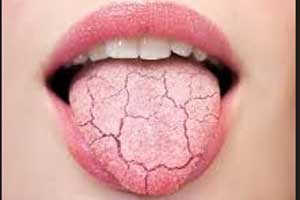- Home
- Editorial
- News
- Practice Guidelines
- Anesthesiology Guidelines
- Cancer Guidelines
- Cardiac Sciences Guidelines
- Critical Care Guidelines
- Dentistry Guidelines
- Dermatology Guidelines
- Diabetes and Endo Guidelines
- Diagnostics Guidelines
- ENT Guidelines
- Featured Practice Guidelines
- Gastroenterology Guidelines
- Geriatrics Guidelines
- Medicine Guidelines
- Nephrology Guidelines
- Neurosciences Guidelines
- Obs and Gynae Guidelines
- Ophthalmology Guidelines
- Orthopaedics Guidelines
- Paediatrics Guidelines
- Psychiatry Guidelines
- Pulmonology Guidelines
- Radiology Guidelines
- Surgery Guidelines
- Urology Guidelines
Hyperbaric oxygen good for management of radiation‐induced xerostomia

Hyperbaric oxygen therapy may be a safe and effective treatment for symptoms of xerostomia after radiation therapy and should be considered when available, reports a new study published in the Journal of Medical Imaging and Radiation Oncology.
Xerostomia, also known as dry mouth, is dryness in the mouth, which may be associated with a change in the composition of saliva, or reduced salivary flow, or may have no identifiable cause. The salivary glands in the mouth don't make enough saliva to keep the mouth wet. This symptom is very common and is often seen as a side effect of many types of medication.
Susannah Sherlock and his associates performed a prospective observational cohort study of 51 patients designed to examine the effectiveness of hyperbaric oxygen treatment (HBOT) for xerostomia following radiotherapy.
Objective (saliva volume) and subjective (quality of life scoring and visual analogue scale (VAS) of discomfort) measurements associated with xerostomia were compared prior to commencement of HBOT, after 30 sessions (over 6 weeks) of HBOT at 243 kPa for 90 minutes daily for five days per week and at 6‐week review (12 weeks from commencement). One hundred and one courses of treatment in 99 patients were examined. For 53 (53%) courses in 51 patients, data were recorded before and after HBOT and were included in the analysis.
Read Also: Which medicines cause Dry mouth symptoms in older adults
Key study findings:
- There were no major complications to HBOT.
- There was a statistically significant difference in saliva volume following HBOT.
- The mean saliva volume increase was 0.9 mL over a 5‐min collection period.
- There was also a statistically significant improvement in discomfort after HBOT and QOL.
- The mean visual analog scale for discomfort (VAS on a 0–10 scale) score decreased by 1.4 units whilst the mean QOL score was 10 points lower after treatment.
Hyperbaric oxygen therapy (HBOT) is a medical treatment which enhances the body's natural healing process by inhalation of 100% oxygen in a total body chamber, where atmospheric pressure is increased and controlled. It is used for a wide variety of treatments usually as a part of an overall medical care management.
For reference log on to https://doi.org/10.1111/1754-9485.12789

Disclaimer: This site is primarily intended for healthcare professionals. Any content/information on this website does not replace the advice of medical and/or health professionals and should not be construed as medical/diagnostic advice/endorsement or prescription. Use of this site is subject to our terms of use, privacy policy, advertisement policy. © 2020 Minerva Medical Treatment Pvt Ltd